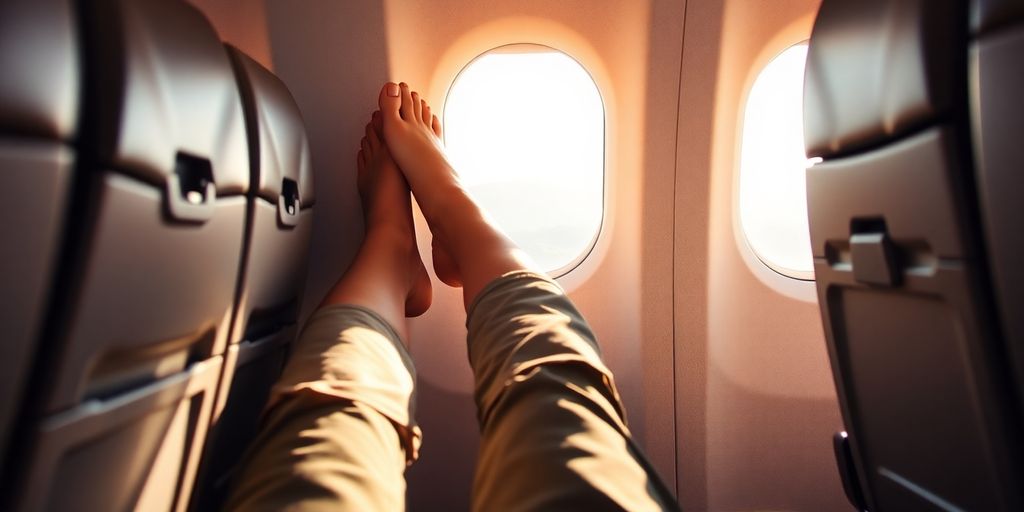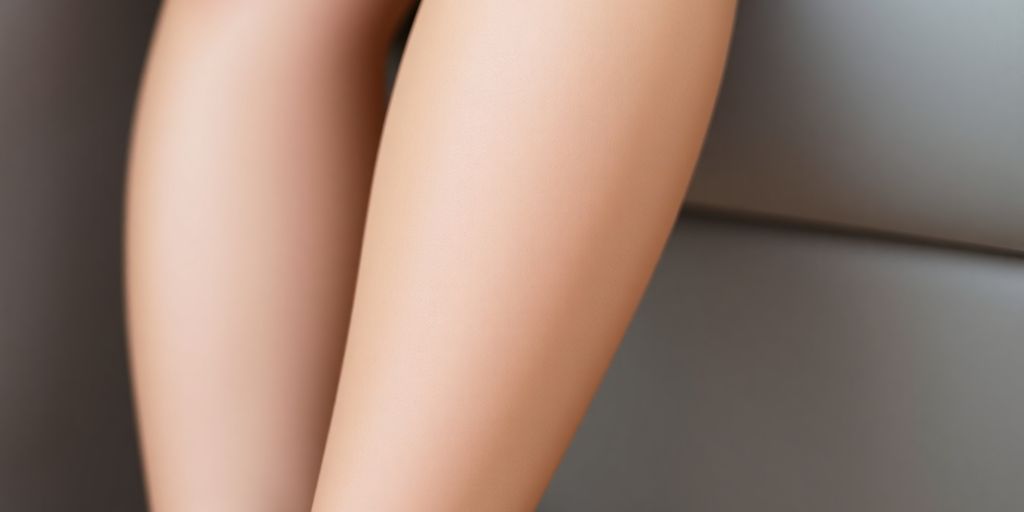A Guide to Compression Socks for In-Flight Circulation
Air travel can be exciting, but long flights may pose challenges, especially when it comes to circulation and comfort. For frequent flyers and those with health conditions affecting blood flow, compression socks for flying are not just a luxury; they can be a necessity. Understanding how these specially designed socks work, their health benefits, and how to choose the right pair can enhance your travel experience significantly. This guide will delve into every aspect of compression socks, helping you make informed decisions to ensure your comfort and health in the skies.
Compression socks are made from elastic materials that provide varying levels of pressure to your lower extremities. The primary purpose of these socks is to reduce the diameter of distended veins and increase blood flow, preventing blood pooling in the legs.

How do compression socks work during flights?
When you sit for extended periods, such as in an airplane seat, your blood circulation may slow, increasing the risk of blood clots and other complications. Compression socks counteract this effect by squeezing your leg tissues, with graduated compression facilitating improved venous return to the heart.
Graduated compression narrows distended veins and assists venous return when seated for long periods, counteracting gravity-driven pooling in the lower legs.
What are the health benefits of compression socks for travel?
-
Improve circulation and reduce the risk of DVT (Deep Vein Thrombosis): Long periods of immobility can lead to DVT, a condition where blood clots form in the deep veins, particularly in the legs. Compression socks help minimize this risk by enhancing blood flow.
-
Alleviate leg fatigue and swelling during long journeys: Many travelers report less swelling and discomfort in their legs when wearing compression socks, making their journey more enjoyable.
Who needs compression socks for flights?
Frequent flyers and long-haul travelers who sit for extended periods and experience post-flight swelling or heaviness.
-
Travelers prone to swelling in feet/ankles who want in-flight comfort support.
-
Higher-risk groups for DVT (e.g., prior clot history, pregnancy, certain medical conditions) who have clinician guidance to use compression during travel.
-
People managing chronic conditions like varicose veins or diabetes who benefit from additional lower-leg support on long trips.
Note: Travelers with specific medical needs should confirm the appropriate compression level with their healthcare provider.
Choosing the Right Travel Compression Socks
Selecting the correct pair of compression leg wear is crucial for maximizing its effectiveness and comfort during flights.
Sizing and Fit
Choosing the right size is vital for ensuring that compression socks work effectively. A sock that is too tight can restrict blood flow, while one that is too loose may not provide adequate support.
To measure for compression socks, follow these steps:
-
Measure your ankle circumference: This is typically the narrowest part of your leg.
-
Measure your calf circumference: Find the widest part of your calf, usually just below the knee.
-
Determine the length of your leg: measure from the heel to the bend of your knee for knee-high socks, or to just below your calf for thigh-high socks.
Using these measurements, refer to the manufacturer's sizing charts to find your perfect fit.
Materials and Comfort
Compression socks come in various materials, including nylon, spandex, and cotton blends. Each material has different properties affecting durability and comfort. Look for socks that offer:
-
Softness: Choose materials that feel comfortable against your skin, particularly during long wear.
-
Durability: Consider socks with reinforced areas that withstand wear and tear.
Higher-quality materials can also manage moisture better, increasing comfort during long flights.
Popular Styles and Brands
Compression socks for flying come in a variety of styles and brands, each offering unique features tailored to travelers.
Overview of Brands
Several well-known brands provide superior compression socks suitable for air travel. Notable mentions include:
-
CEP Compression Sportswear (best overall for flights): Known for their comfort and performance, offers a range of compression socks designed specifically for travelers, in both men and women sizes.
-
Royfa (best comfort cotton option for casual travelers): Includes accessible choices for travelers who want comfort support with moderate compression 15-20mmHg
-
Juzo (best for higher‑support travelers with clinical guidance): Featuring innovative designs of knee‑highs and thigh‑high stockings for travelers who need stronger compression and easier donning.

When to Put on Compression Socks for Flying
Before the airport or boarding: start when legs are least swollen to maximize effectiveness from the moment you’re seated.
-
Keep them on for the entire flight: avoid mid-flight removal so you maintain consistent support.
-
Wear 1–2 hours after landing: allow a gradual transition as activity resumes at the destination.
-
If you’re new to compression, practice donning at home so the snug fit doesn’t delay you at the gate.
Application Tips
When putting on compression socks:
-
Start at the toe and gradually pull the sock up your leg to avoid bunching.
-
Ensure there are no wrinkles or folds, as these can reduce the effectiveness of compression.
-
Consider washing and air-drying your socks carefully to maintain their elasticity and shape.
Get a little extra help with our guide on How to Put on Compression Socks by Dr. Richard Miller.
Addressing Common Concerns
Despite the many benefits of compression socks, there are still some misconceptions and concerns surrounding their use.
Efficacy Controversies
Some travelers may question the necessity of wearing compression socks. While they are highly recommended for individuals with specific health conditions, frequent flyers can benefit from added circulation support. Ultimately, the decision should reflect personal health needs, flight duration, and comfort levels.
Frequently Asked Questions
1. Are compression socks good for flying?
Yes—by supporting venous return and limiting pooling, they reduce swelling, heaviness, and support lower DVT risk on longer flights.
2. Who needs compression socks for flights?
Frequent flyers, travelers prone to swelling, individuals at higher risk for DVT with clinician guidance, and people managing certain chronic conditions.
3. What are the best compression socks for travel?
Look for knee-high graduated compression in 15–20 mmHg; traveler-tested picks include CEP Flight (men/women), Royfa Soft Cotton (15–20 mmHg), and Juzo Move (for higher-support needs). Explore the collection for sizes and colors.
4. When should I put on compression socks for a flight?
Put them on before the airport/boarding, wear for the full flight, and keep on 1–2 hours after landing.
Conclusion
Investing in quality compression socks for flying can significantly enhance your travel experience by promoting circulation and reducing discomfort during long flights. Whether you’re a frequent flyer or someone preparing for a special trip, understanding the benefits and effectively selecting and using compression socks is key.
Take a look at the variety of below the knee compression for women and men available at Compression Health online. Measure accurately for a perfect fit and enjoy the peace of mind that comes with protecting your health during air travel. Don’t hesitate to assess your travel needs and consider adding compression socks to your carry-on essentials for your next adventure in the skies.



Share:
What Does 20–30 mmHg Compression Mean — Is It Right for You?
What Does 20–30 mmHg Compression Mean — Is It Right for You?